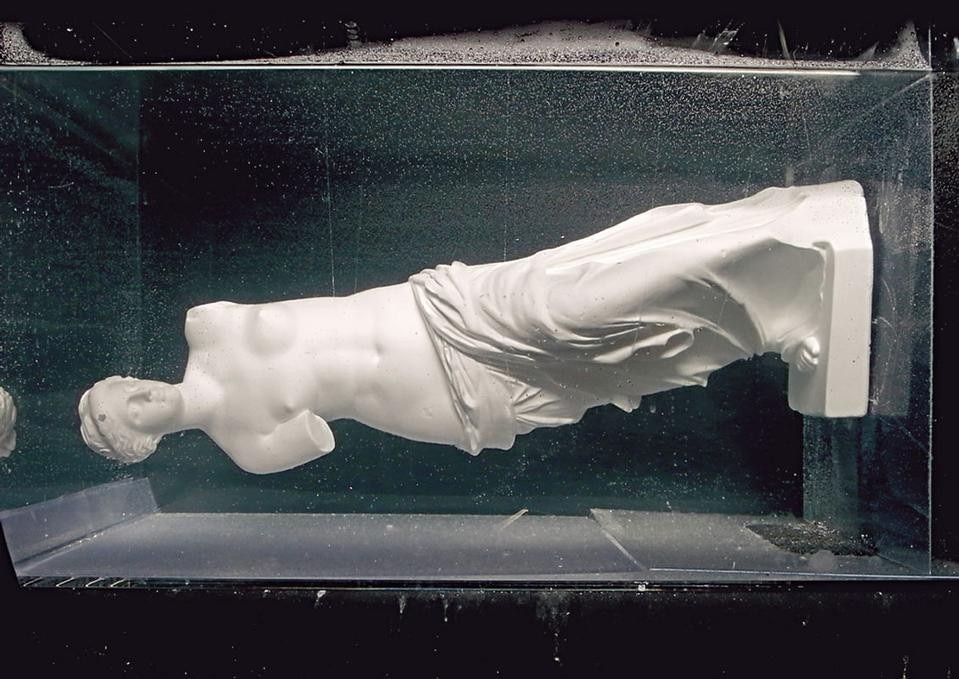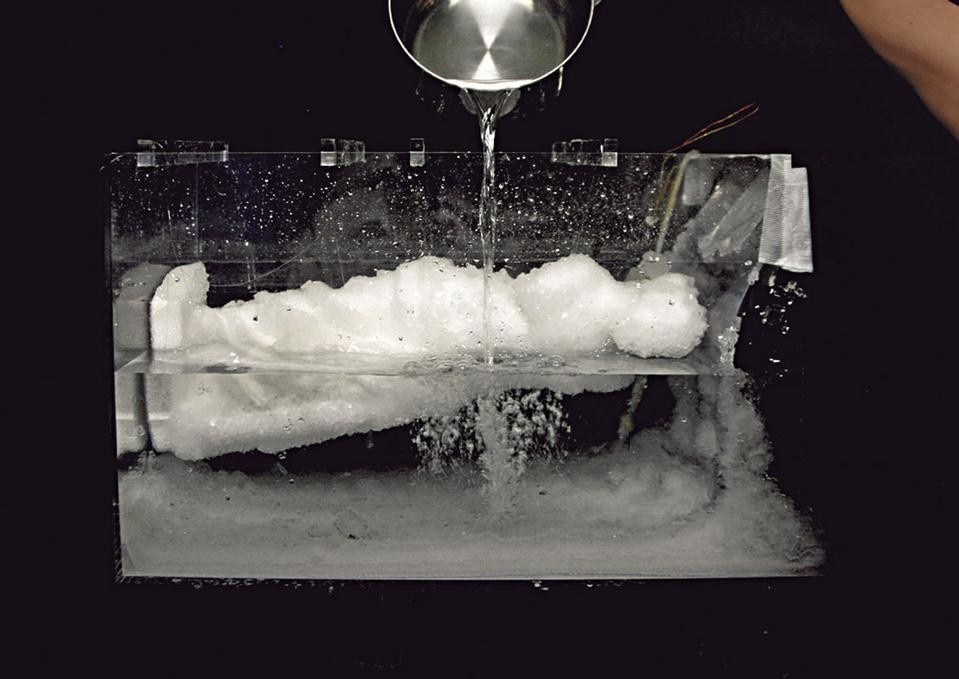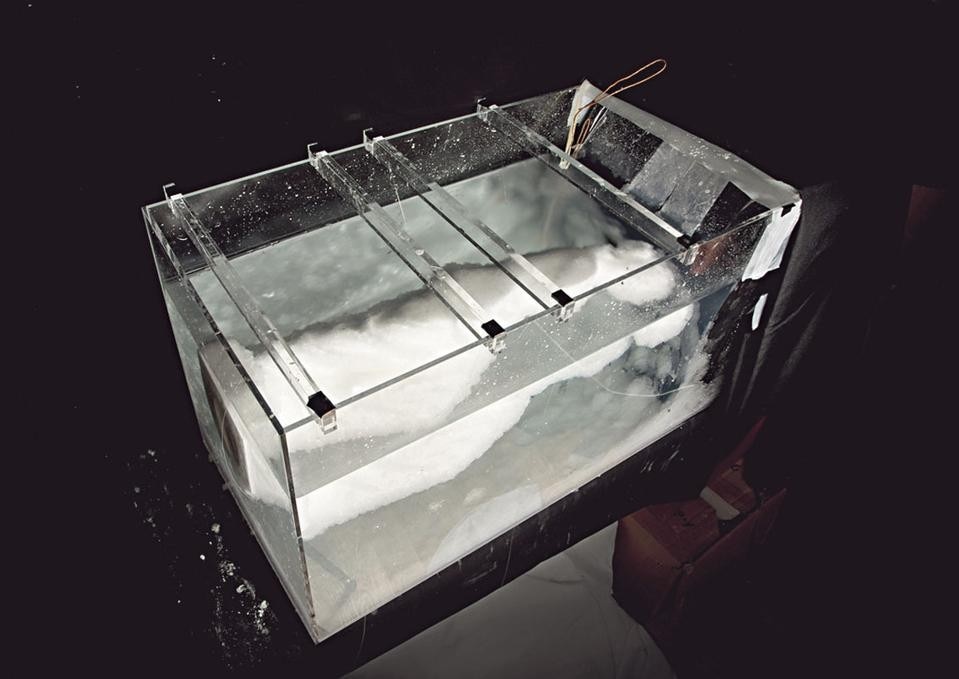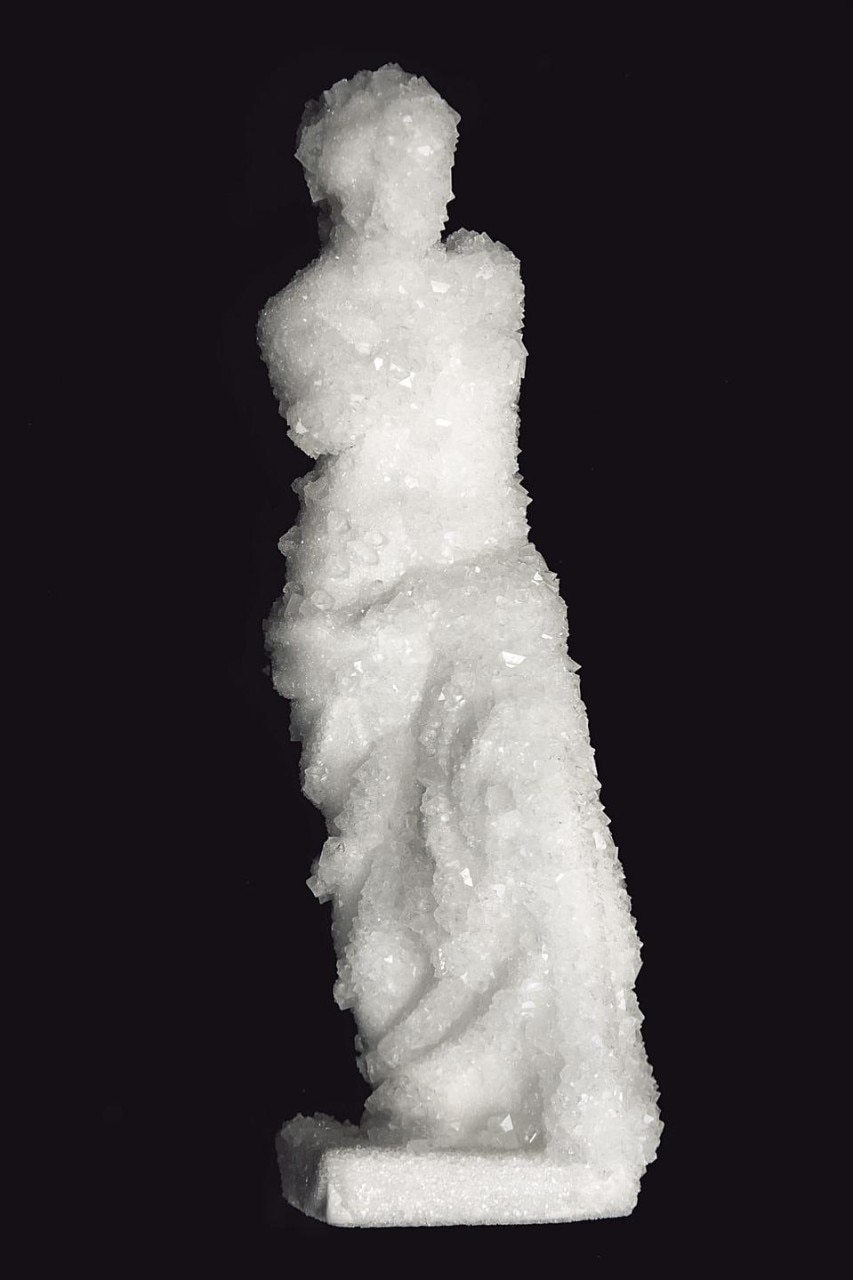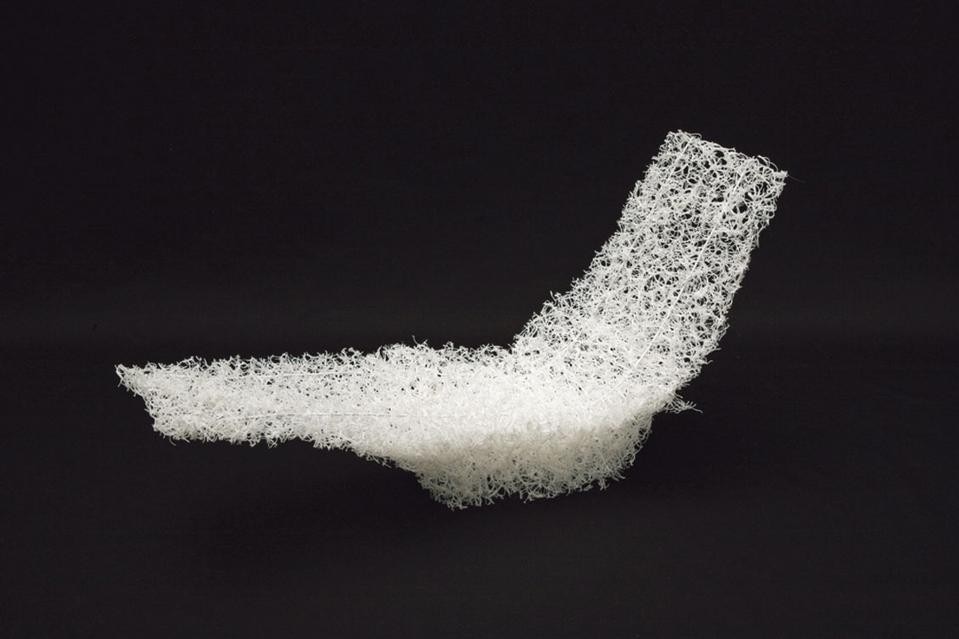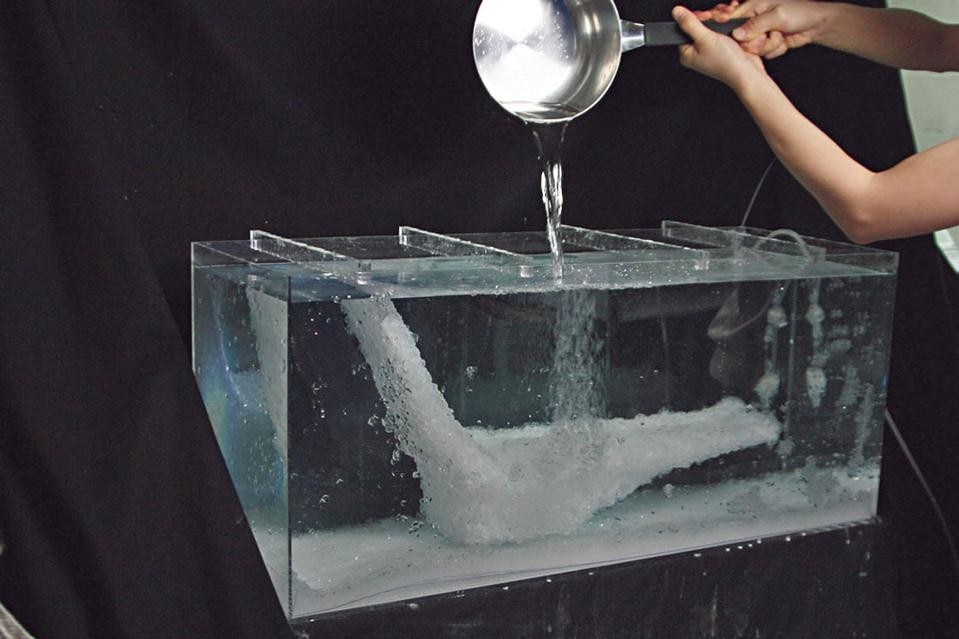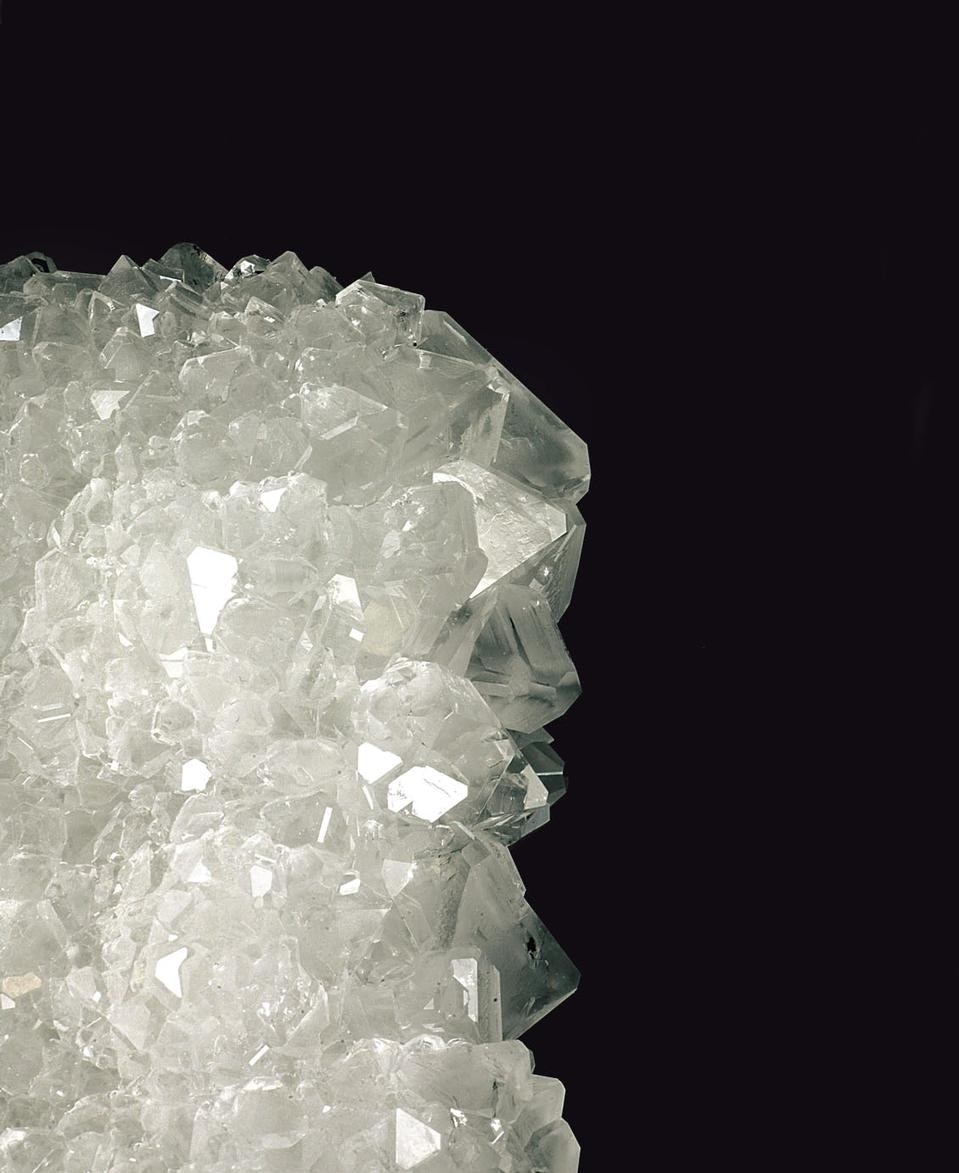The travelling chronicler, temporarily offduty, will soon be dismayed to notice that this is no artistic composition. Instead it is a cemetery, thrown onto the seashore in eternal memory of the destruction caused to the coral reef by the Tsunami, or by the rising temperature of the waters that has killed 90 per cent of the coral in the Seychelles. Each of these forms would be the envy of Hans Arp (or Henry Moore, in the most elaborately ornate cases), yet each is just another small monument to the transience of living beings, to the constant menace of death under which they, all of us, are born and develop. All this comes to mind as the chronicler thinks back to the stress of work waiting thousands and thousands of miles away from this island, and the urgency and curiosity in describing a project like Tokujin Yoshioka’s new invention, for example. The young Japanese designer has discovered a “second nature” in a mysterious crystallisation process that literally allows him to grow the shapes of some archetypical pieces of furniture in water, just like coral or madrepores. Chaise longue, armchair and even Venus de Milo, ironically deconstructed in thousands of small crystals agglomerated in a way that unmistakably resembles the all-time art legend, an involuntary icon of the same ornate beauty that nature loves so much.
The secret of this “design on the rocks”, which is to be the centrepiece of an exhibition in Tokyo (at 21_21 Design Sight, 17 October – 18 January, 2009), lies less in its technical process, chemical composition or gourmet recipe (as surprising as it might be) as in Tokujin’s extraordinarily inventive methodology. Almost every time he tackles a new assignment or simply has the opportunity to do research, he tries to “engineer” a different way of creating objects that varies in its degree of wondrousness according to its result being intended as an industrial product or a prototype, as in this case. He is practically always inspired by nature, whose generative processes he mysteriously succeeds in reproducing (but not necessarily the formal outcome) in an artificial, impossible challenge to the mortal destiny that is part of nature itself. Tokujin once again seems to go by the words written in his first book, of which I find a signed copy dating back to 11 April, six years ago: “Even when everybody thinks a project is impossible, a way will open up as long as you challenge old ways with interest and with courage.”
